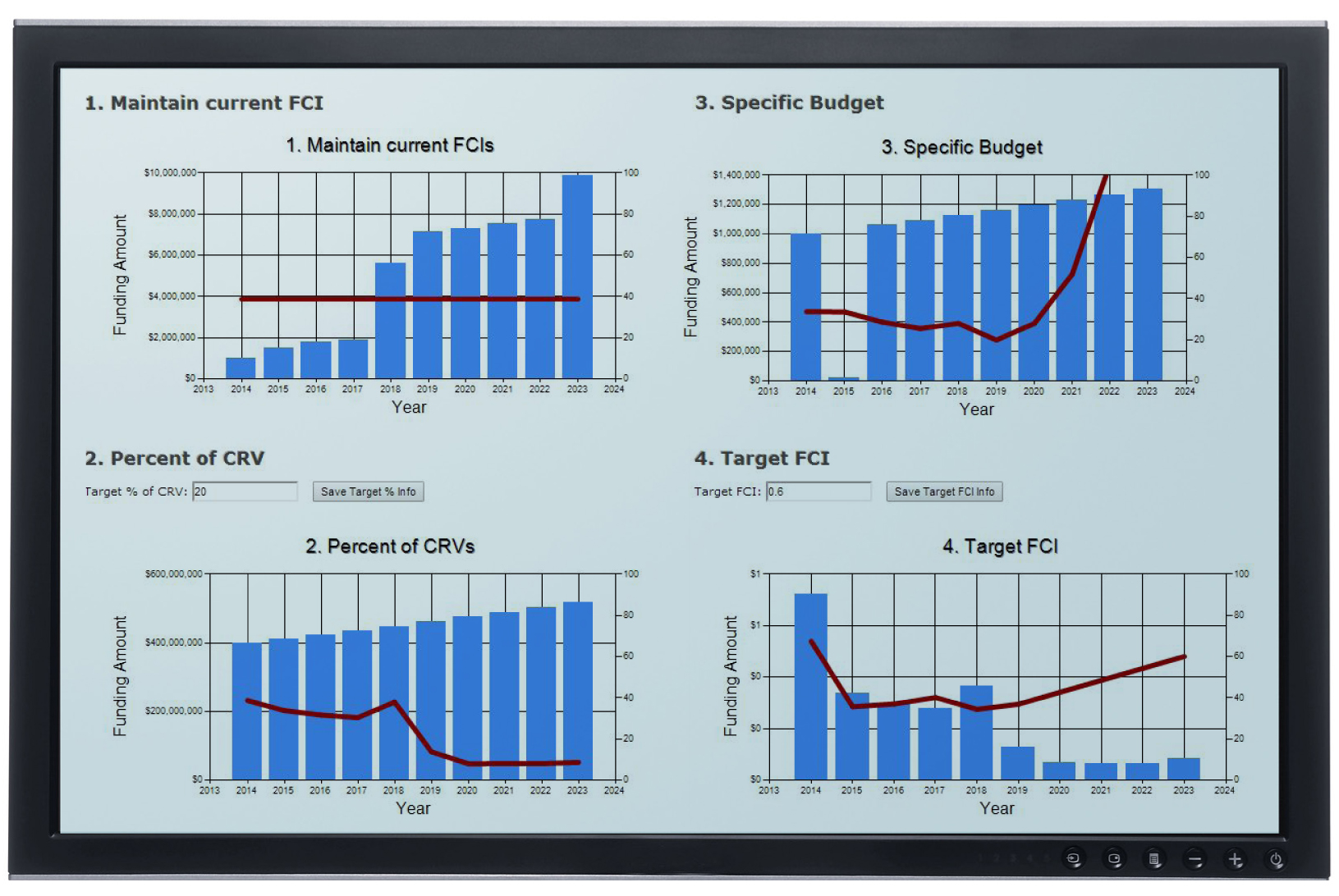CannonDesign Facility Optimization Solutions has released proprietary Facility Condition Assessment (FCA) software focused on empowering organizations to manage existing facility assets and operations more efficiently and effectively.
The FCA software creates a database populated by facility assessment data that becomes a planning tool for organizations, giving them the power to strategically track facilities and development needs while managing repairs and capital projects in a predictable, efficient manner. Specifically, the database:
- Identifies critical failures of components and systems, code and ADA-compliance issues
- Promotes proactive maintenance programs
- Helps budget for capital projects through cost escalation on an annual basis over a five, 10 of 20 year period.
- Systematically justifies prudent expenditures
- Directly corresponds to criteria required by government authorities and client protocols
The FCA software is available to organizations via the cloud across traditional and mobile platforms, serving as a web-based facility assessment tool for assessment, analysis and action. CannonDesign’s team of licensed architects, engineers and cost estimating professionals is capable of executing the assessment to collect the facility data for population. Data collected by the assessment team during the day can be uploaded in the evening, quality checked and available for viewing the next day.
The software is already driving value for a number of organizations including Buffalo Public Schools, University of Illinois and Charlotte County, Florida. For more information about the FCA software and CannonDesign Facility Optimization Solutions visit http://www.cannondesign.com/practice/services/facility-optimization/.
Related Stories
| Sep 24, 2014
Must see: Semi-submerged hotel planned for Qatar's man-made island
Plans for a new hotel in the Persian Gulf are taking Dubai’s Palm Islands concept to a whole new level—underwater, that is.
| Sep 24, 2014
5 business lessons from a 43-year Star veteran
Mary Ed Cain was supposed to be born a boy. That was the first time she surprised everyone. The second time came on a daily basis during her 43-year career at Star Building Systems. SPONSORED CONTENT
| Sep 24, 2014
Architecture billings see continued strength, led by institutional sector
On the heels of recording its strongest pace of growth since 2007, there continues to be an increasing level of demand for design services signaled in the latest Architecture Billings Index.
| Sep 24, 2014
Frank Gehry's first building in Latin America will host grand opening on Oct. 2
Gehry's design for the Biomuseo, or Museum of Biodiversity, draws inspiration from the site's natural and cultural surroundings, including local Panamaian tin roofs.
| Sep 23, 2014
Cedars-Sinai looks to streamline trauma care with first-of-its-kind OR360 simulation space
The breakthrough simulation center features moveable walls and a modular ceiling grid that allow doctors and military personnel to easily reconfigure the shape and size of the space.
| Sep 23, 2014
Third phase of New York’s High Line redevelopment opens
The $35 million Phase 3, known as High Line at the Rail Yards, broke ground September 20, 2012, and officially opened to the public on September 21.
| Sep 23, 2014
Cloud-shaped skyscraper complex wins Shenzhen Bay Super City design competition
Forget the cubist, clinical, glass and concrete jungle of today's financial districts. Shenzhen's new plan features a complex of cloud-shaped skyscrapers connected to one another with sloping bridges.
| Sep 23, 2014
Designing with Water: Report analyzes ways coastal cities can cope with flooding
The report contains 12 case studies of cities around the world that have applied advanced flood management techniques.
| Sep 22, 2014
4 keys to effective post-occupancy evaluations
Perkins+Will's Janice Barnes covers the four steps that designers should take to create POEs that provide design direction and measure design effectiveness.
| Sep 22, 2014
NCARB overhauls Intern Development Program, cuts years off licensure process
The newly adopted changes will be implemented in two phases. The first will streamline the program by focusing on the IDP’s core requirements and removing its elective requirements. The second phase will condense the 17 current experience areas into six practice-based categories.















